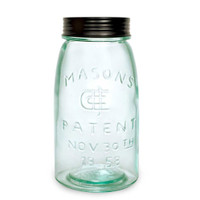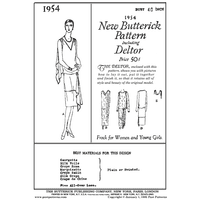 Loading... Please wait...
Loading... Please wait...Categories
Add to Wish List
New Products
- Home
- Historic Patterns
- Women's
- Regency (1790-1820)
- Woman's & Girl's Caps, 1740-1820
Product Description
Everyday Headwear Pattern for 1740-1820, includes the following:
View A: Round Eared Cap has several variations, including single or double ruffles, and ruffles that are continuous and un-split at top center of the forehead, or that are split at that point. There are also two sizes of caul (back piece) for the woman's size, which can accommodate different head sizes and hairstyles, and a Girls or Small Womans size. The caul neckline has a narrow drawstring. c.1740-1810.
View B: Mob Cap is quite adjustable, and is given only in the size of the original caps. The top of the headpiece (front piece) has two delicate drawstrings, and the caul neckline has a narrow drawstring. c. 1740-1820. Worn especially by older women during the early 1800s.
View C: Grand Coiffe is a sheer cotton muslin head covering frequently worn over another cap, such as the round eared cap, sometimes under a hat, and is also worn for un-dress (inside home) without a cap. It can have a very narrow lace trim on the hems. The back of the head has a delicate drawstring, which draws up the triangular cut of the coiffe into a nicely fitting shape. c. 1730-1790.
Find Similar Products by Category

Product Reviews
-
Great for Children of the American Revolution

Posted by Allison Jenkins on 23rd Feb 2016
The wording in the instructions is a bit difficult to figure out, but by looking at the drawings and the finished one on the cover, I was able to put together a sweet cap (A) for my 11-year-old. I used lace for the ruffle, so I had to do a bit of tweaking there. I did do the whole cap by hand, which was a first for me. Now to do one for my 9-year-old and myself!
-
Cap pattern

Posted by nancy on 24th Apr 2013
The pattern was a little bit hard to figure out at first but the results are beautiful. I adapted it to machine and modern methods with a little head scratching. I was very pleased with the pattern in general and am sure that it is historically accurate. I just needed to develop a faster method to make up some for a play and it was a terrific base for that.









